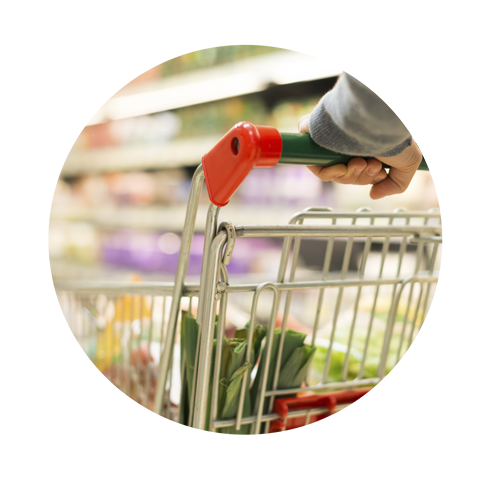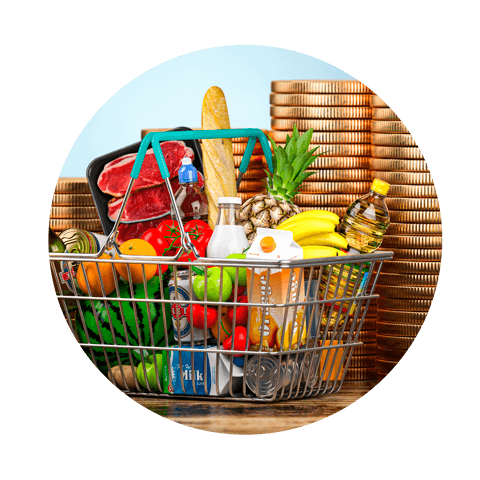
Return to Pre-Pandemic Behaviour
COVID-19 impact continues to reduce, but some changes seem here to stay
Basket Sizes
They may not reach pre-pandemic levels but basket sizes are lowering
Average Basket Size in the Latest 108 Weeks
At the peak of the pandemic, customers tended to buy food for 1-2 weeks, pushing basket size up significantly. We can see that gradually, as restrictions have decreased, basket size has followed.
However, what we can see in the latest few months is that this decrease has slowed down, which could signal these two things.
Firstly, it could be a permanent change in shopper behaviour. This may be because hybrid working has reduced the need for customers to do top up shops. Additionally, the increase in online shopping during the pandemic could mean customers are now pre-planning their shops more, and this behaviour has stuck both online and instore. We could see long-term effects in purchases of products in line with large basket shops, such as shoppers buying more multipacks and freezer items.
Secondly, it could be an indication of the impact that cost of living increases are having; with people trying to save money, they could be more reluctant to eat out, substituting this with increasing food purchases in stores.
Fast Delivery Services
Sainsbury’s sales on Deliveroo and Uber Eats have seen great growth
Sales on Fast Delivery Services in the Last 52 Weeks
As customers lives’ return to normal and are getting busier, they are really valuing the convenience of rapid delivery services. Along with these services being recently launched, sales have been steadily increasing, with peaks around seasonal event such as the New Year and Easter.
These services tend to be particularly popular in sales for categories such as Impulse, Dairy and Produce. Given the growth in popularity, this could signal to suppliers that these services could be invaluable for exposure and growth of household staples.

Cost of Living
Rising costs have been at the forefront of customers’ minds
Economic Outlook
Amid rising costs, peoples’ economic outlooks have been worsening
0
Believe the UK’s economic situation will worsen within 6 months
0
Believe their own economic situation will worsen within 6 months
The cost of living and inflation are both rapidly increasing, with inflation hitting a 30-year high driven by post-pandemic demand for goods and series, and the situation in Ukraine increasing food and energy costs. This is having a negative effect on people and their economic outlook.
The percentage of people who believe their economic situation will worsen currently sits at its highest rate since the question has been tracked, with the rate more than doubling since the start of the year. With energy price caps due to increase once again in October, and no signs to the end of prices increasing, it’s highly likely that this trend will continue.
In stores we can expect an impact, with customers trying to save more. Many may look to trade down in certain categories, for example, a movement from Taste the Difference to entry price point brands may be expected for those affected. There could also be an element of customers being more hesitant to eat out, so are replacing this with more premium dine-in food, such as the Dine in for Two range.
We may also see customers researching the price of products before purchasing them, alongside going for the reduced items instore as a result.
Easter Spending
Customers looked for more affordable ways to celebrate this Easter
Growth in Units by Price Point vs Last Year
Lower priced Easter confectionary drove sales this year, with the £2-£4 price point SKUs having the highest growth vs. last year. Furthermore, the highest price point products have dipped in popularity. This really drives home the point that customers are feeling the effects of rising costs, so they looked towards more affordable Easter products to celebrate at a lower price point.
Given the current economic situation, it’s likely that this trend will continue for future events. We can expect customers to be exploring lower price point options during events. Given that more may decide to celebrate from home, we could expect more affordable products within the Beers, Wine & Spirits and Impulse categories to see good growth.
